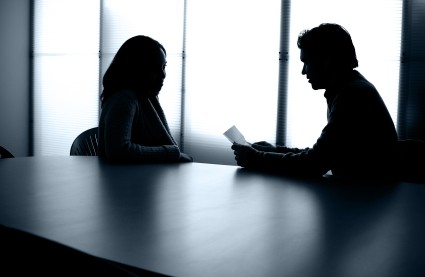Identifying Sexual Harassment
Sexual harassment in the workplace isn’t always easy to spot. The American Association of University Women defines workplace sexual harassment as any “unwelcome sexual advances, requests for sexual favors, or other verbal or physical conduct of a sexual nature.” Sexual harassment can take the form of a sexual comment made in a meeting or an insinuating Facebook message from a co-worker.
Conducting an Effective Sexual Harassment Investigation
Prevention of harassing behavior is the ultimate objective. Effective and immediate intervention minimizes injury to the victim. It also sends a clear message that harassment is not tolerated.
Check out HR Hero’s 10 tips for conducting an effective sexual harassment investigation:
Promptly report the employee’s complaint:
Supervisors should immediately report any complaint of sexual harassment to the HR department or any other individual identified as the person with ultimate responsibility for enforcing the company’s policies against unlawful harassment.
Promptly initiate the investigation:
You may have all the right policies and your investigation may be thorough, but it’s difficult to argue that you take harassment complaints seriously if you wait two months to start an investigation. Initiate investigations immediately, and complete them as soon as possible.
Be familiar with EEOC guidelines:
A favorite tactic of employees’ attorneys is to attack an employer’s investigation by showing how it fell short of the Equal Employment Opportunity Commission’s guidelines on how to conduct an effective inquiry into unlawful harassment. The guidelines include advice on how to reach credibility determinations, protective measures to take during the investigation, and specific questions to ask the victim, the accused and any witnesses.
Develop adequate documentation:
Document every investigation with the worst-case scenario in mind. Craft reports thoroughly and thoughtfully. Ideally, have witnesses sign the witness statements. When offering conclusions about a witness’ credibility, the investigator should set forth the objective basis for his or her determination.
Interview all potential witnesses:
You should ask the victim to identify any witnesses who might have relevant information. Also, you should interview coworkers of the accused, who may be able to provide information about whether they have seen him or her engage in similar conduct. If coworkers have witnessed the alleged harasser engage in sexual harassing conduct in the past, it can have a huge impact on the outcome of the investigation.
Take interim remedial measures during the investigation:
Too often, employers focus only on which remedial measures to take after the investigation is complete. However, depending on the circumstances, you may need to take temporary remedial measures during an investigation. For example, you may want to separate the victim from the alleged harasser until the investigation is complete.
Take steps to avoid retaliation:
Everyone concerned, including HR representatives, supervisors and managers, should be extremely sensitive to the rules prohibiting retaliation. In most cases, seemingly retaliatory conduct, committed by the accused or others, can lead to additional liability. Let everyone involved know you will not tolerate any form of unlawful harassment or retaliation.
Remember that confidential complaints still count:
Every employer has probably confronted this problem at least once: An employee complains to a supervisor that a coworker engaged in inappropriate conduct but asks the supervisor to “keep it between us for now.” That’s usually because the employee fears retaliation. The supervisor should explain to the employee the company will do everything possible to keep the matter confidential. Though it faces legal liability if it doesn’t investigate every complaint. You shouldn’t promise absolute confidentiality but instead state your intent to provide confidentiality to the extent practical.
Avoid prejudging complaints:
Until a claim is fully and carefully investigated, you shouldn’t form conclusions about guilt or innocence. Conduct a completely unbiased investigation. An individual who doesn’t immediately supervise or have a close relationship with anyone involved should conduct the investigation.
Be consistent:
All complaints, even seemingly minor ones, should be investigated thoroughly, and similar incidents should result in similar discipline. One of the most common mistakes employers make is to protect a high-level executive, top producer or favored employee who has been accused of harassment while implementing more serious discipline against other employees accused of similar conduct. It is critical cases be treated alike, regardless of the relative “stature” of the parties involved.
A complaint of egregious contact requires thorough investigation. For tips and training on how to conduct sexual harassment investigations, contact your EFR Account Manager.

